Panasonic
Latest

A brief history of mirrorless cameras
Mirrorless cameras are here to stay. The argument to own one isn't only about them being small and lightweight anymore, because nowadays many mirrorless shooters rival DSLRs in image quality -- something that would've been unimaginable a decade or so ago. Today, the likes of the Sony A7 III, Nikon Z7, Canon EOS R and Panasonic S1R are some of the best cameras, period. But none of these flagships would exist today if it weren't for the hundreds of Micro Four Thirds and APS-C models that came before them, some of which are still popular and have paved the way for manufacturers to turn photographers and videographers alike into mirrorless fans.
Edgar Alvarez04.15.2019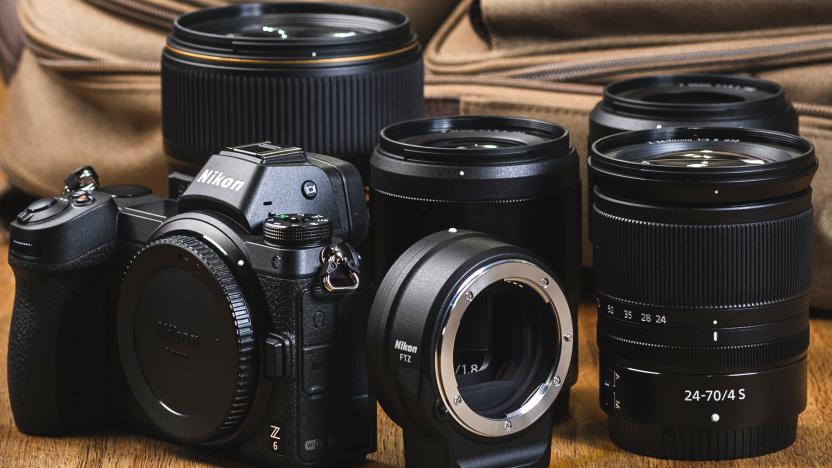
How to pick a lens for your mirrorless camera in 2019
When buying a mirrorless camera, there's an equally crucial side question: What lenses do I need for this thing? The glass you place in front of that sensor plays a key role in how your photos or videos look and what kind of shooting you can do. It's a complex decision too. You need to consider factors like sharpness, distortion, speed, prime or zoom and, most important, price. In this guide, I'll touch on all that and look at some of the best lenses for Sony, Canon, Nikon, Fujifilm and Micro Four Thirds mirrorless cameras.
Steve Dent04.15.2019
How to buy a mirrorless camera in 2019
You can mark down 2019 as the year that mirrorless cameras vaulted to the top of photographers' wish lists. They sold nearly as well as DSLRs in 2018, thanks largely to Sony, and may outsell them for the first time in 2019. That's because the number available exploded at the end of 2018 and most of the important new cameras are mirrorless models. All of them have improved autofocus tech, better electronic viewfinders and excellent 4K video features. Nikon, Canon and Fujifilm are determined to cut into Sony's market share, so they all released new models -- to various degrees of critical acclaim. And it's working: Where Sony once had 99.5 percent of the full-frame mirrorless market in Japan, for instance, its share has dropped to 60 percent. More choice is terrific, but it does make your buying decision more difficult, which is why we're here. Our deep and detailed camera guide, dedicated to mirrorless models, will help you sort out which one that suits you best, depending on your needs and budget.
Steve Dent04.15.2019
Tesla and Panasonic hold off on Gigafactory expansion
Tesla and Panasonic are delaying plans to expand the electric car maker's Gigafactory 1 battery plant in Nevada. The two companies decided to freeze spending on the world's largest EV battery plant following less-than-stellar demand of new Teslas, reported Nikkei Asian Review. The two companies had initially planned to raise capacity by 50 percent by next year. Panasonic has also apparently canceled plans to invest in Tesla's new Gigafactory in Shanghai, as well.
Amrita Khalid04.11.2019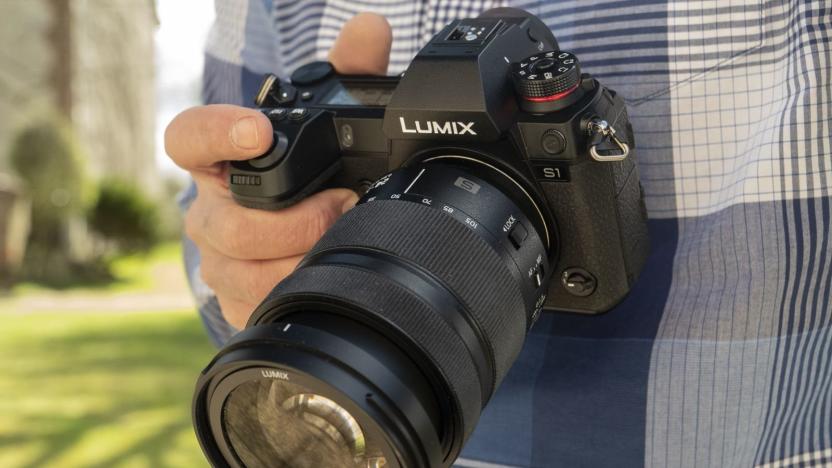
Panasonic S1 review: A perfect camera, except for its autofocus system
Panasonic is last to the full-frame mirrorless fight, but it's coming out swinging. In February, it unveiled the S1 and S1R cameras and both of them are tough, beastly models with impressive feature sets. The 24.2-megapixel S1 I'm reviewing here is the more affordable at $2,500, but it's also the most versatile, aimed equally at photographers and videographers. Feature-wise, it lines up closely with Sony's A7 III and the new Nikon Z6. The spec sheet is packed with things like 5-axis in-body stabilization, 10-bit internal 4K recording, a stellar electronic viewfinder and dual card slots. I had concerns about the price and autofocus system, however, so I was very curious to see how it stacked up against its main rivals in a full review. Now, let's find out.
Steve Dent04.10.2019
Panasonic's G95 is a do-it-all hybrid mirrorless camera
With the release of the Lumix G95 (the G90 in Europe), Panasonic continues to build cameras that appeal equally to photographers and video shooters. The hybrid mirrorless camera packs a 20.3-megapixel Micro Four Thirds sensor with an all-new Venus engine and 5-axis in-body stabilization. It can shoot at 9 fps, or 6 fps with continuous autofocus, and record 30 fps 4K video or 1080p video at up to 120 fps.
Steve Dent04.05.2019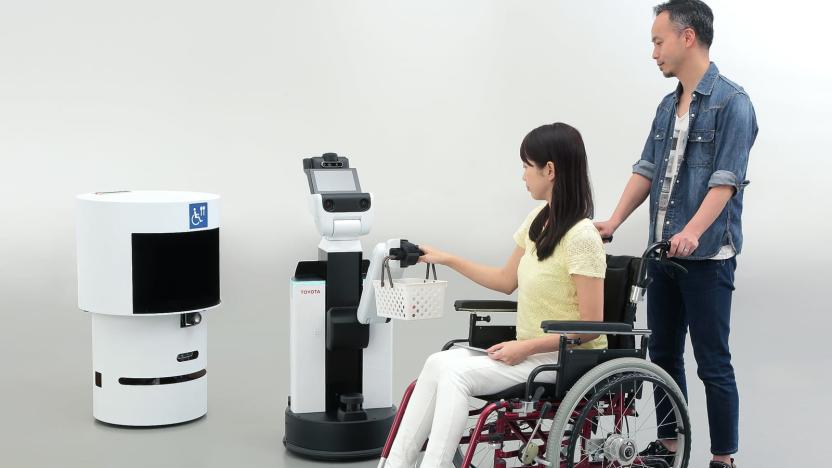
Robots will serve as guides for the 2020 Olympics
You didn't think a 2020 summer Olympics set in Japan would go without some robots, did you? Sure enough, they're on their way. The Tokyo Olympics' Organizing Committee has launched a Tokyo 2020 Robot Project that will have automatons providing assistance both to spectators and crews behind the scenes. Robots from Toyota (above) will help wheelchair-bound guests by guiding them to their seats, delivering food and providing event info. Panasonic, meanwhile, will provide Power Assist Suit exoskeletons (below) to help workers carry food, trash and other heavy cargo with relative ease.
Jon Fingas03.19.2019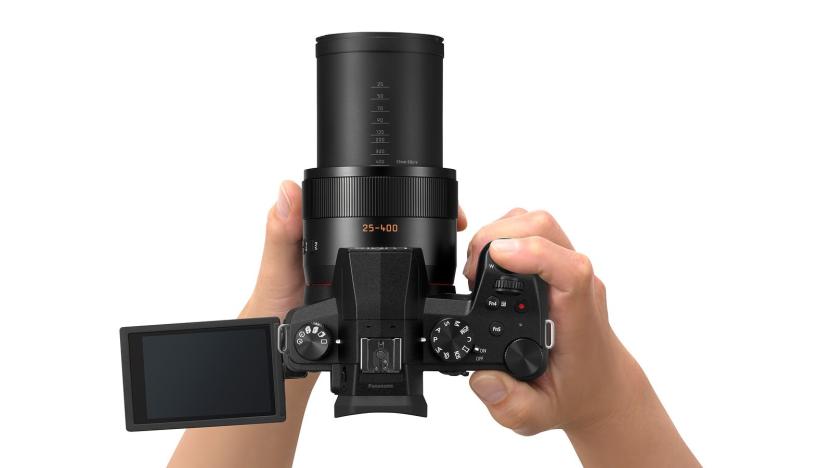
Panasonic's FZ1000 II 16x superzoom targets Sony's RX10
If you're looking at Sony's RX10 IV but don't want to pay 1,700 freaking dollars, Panasonic might have the camera for you. It just unveiled the FZ-1000 II, an upgrade to the 2014 FZ-1000, that costs nearly half that. It's got a 1-inch, 20.1-megapixel "high-sensitivity" CMOS sensor and 16x 25-400mm f/2.8-4.0 (35mm equivalent) Leica zoom, only a bit less than the 24-600mm reach of its rival. It also has a fully articulating 3-inch touchscreen ideal for selfies and vlogging, bettering the tilt-only display on the RX10 IV.
Steve Dent02.19.2019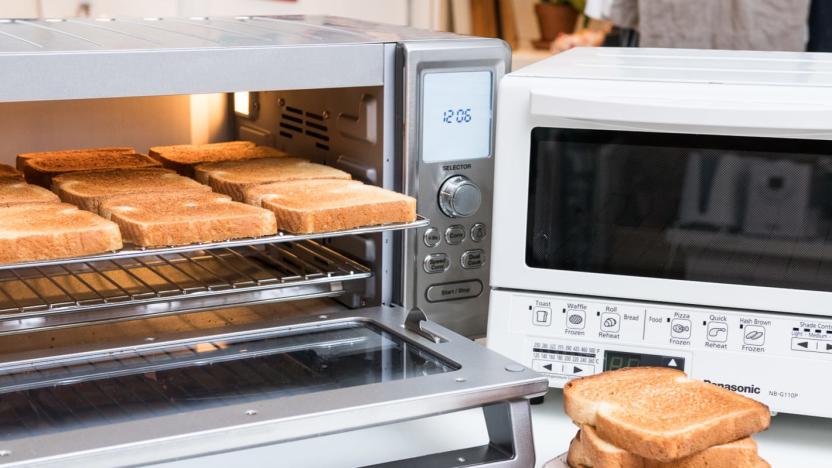
The best toaster oven
By Michael Sullivan and Brendan Nystedt This post was done in partnership with Wirecutter. When readers choose to buy Wirecutter's independently chosen editorial picks, Wirecutter and Engadget may earn affiliate commission. Read the full toaster oven guide here. After more than 90 hours of research and testing—and making stacks and stacks of toast, mini pizza bagels, and cookies—we think the small Panasonic FlashXpress toaster oven and the large Cuisinart TOB-260N1 Chef's Convection Toaster Oven are the best for most people. We recommend the compact Panasonic toaster oven only for small jobs like making frozen snacks, and the sizable Cuisinart toaster oven for everything, including bigger tasks, like baking a pizza or roasting a whole chicken. Both models consistently produced almost perfectly browned toast and evenly baked cookies. They performed as well as (or better than) toaster ovens costing two or three times as much. The reasonably priced Panasonic FlashXpress excels at making toast, cookies, and frozen snacks. In our tests, it cooked food evenly and didn't generate any hot spots that would otherwise cause inconsistent toasting. Impressively, it made toast faster than most of the other models we tried. At around 1 cubic foot in volume, it takes up very little space on a counter, but it's still large enough to fit four pieces of bread or two slices of leftover pizza. We think the Panasonic is best for people who just want to use a toaster oven for toast or other small jobs, like preparing a handful of frozen snacks. For accomplishing bigger tasks, consider getting our other picks, the Cuisinart TOB-260N1 Chef's Convection Toaster Oven or the Breville BOV800XL Smart Oven, which hold nine and six pieces of bread, respectively. The large Cuisinart TOB-260N1 offers nearly all of the capabilities of a full-size oven. It delivers even heat to up to nine slices of bread and can easily handle a 13-inch frozen pizza or a whole roast chicken (whereas our other pick, the Panasonic FlashXpress, can fit only a handful of frozen snacks). The Cuisinart's three-year warranty is outstanding, as are its impressive accessories, which include a pizza stone. Like the Panasonic, this toaster oven was one of the fastest at preheating to 350 °F in our tests. Since it's so large (it measures roughly 20.5 by 13.25 by 11.25 inches), we recommend this model for bigger households that have ample space for a sizeable countertop oven. The Breville Smart Oven BOV800XL, a 1,800-watt convection toaster with the company's Element IQ technology, is a great medium-size model that's more compact than our Cuisinart pick but bigger than the Panasonic FlashXpress. We were impressed by its ability to maintain a set temperature better than most of its competition. It doesn't toast quite as evenly as the Cuisinart, but it bakes cookies and melts cheese well. Compared with the Panasonic, the Breville has a more modern, intuitive interface. However, it is more expensive, lacks an oven light, and doesn't offer a pizza stone like the Cuisinart. The inexpensive Hamilton Beach 31401 toasted bread better than any other toaster oven less than $100. This no-frills model lacks many of the features included in our other picks, such as digital controls and preset cooking features, but it heats evenly. Its humble size makes it ideal for kitchens with limited counter space, but its oven cavity is still large enough to fit four slices of bread. The Hamilton Beach runs cooler than other models we tested, so you'll need to increase the temperature by about 25 degrees when baking or roasting. However, we think this is a forgivable drawback considering its low price.
Wirecutter02.03.2019
Panasonic S1 and S1R hands-on: Feature-packed full-frame cameras
Panasonic has officially barged into the full-frame mirrorless fight by launching two new cameras. The S1 is a 24.2-megapixel camera mainly targeting video shooters, while the 47.3-megapixel S1R is for portrait, landscape and other types of high-resolution photography. They looked promising when we saw them at Photokina last year, but there was still a lot we didn't know. Now we not only have the full picture, but I've had a chance to handle the cameras for the better part of a day. The new models beat their rivals from Sony, Nikon and Canon in several ways, especially when it comes to stabilization and 4K video. As it stands now, they look like very competent models that will make your full-frame mirrorless buying decision that much harder -- if it wasn't hard enough already.
Steve Dent02.01.2019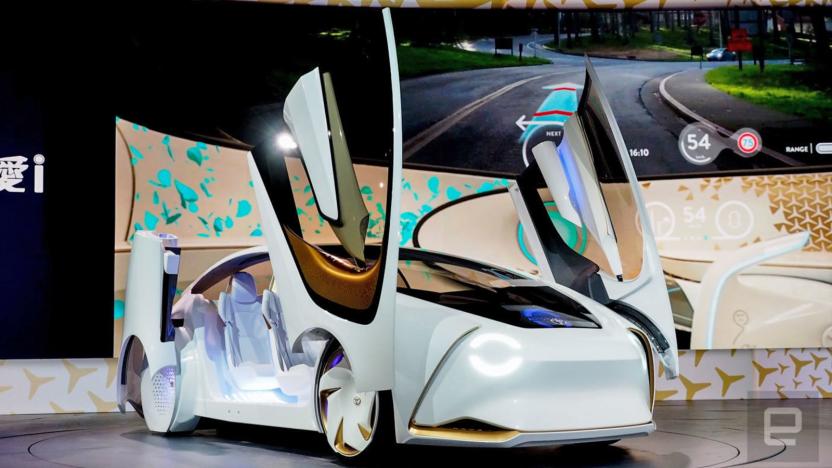
Toyota and Panasonic may team up to make EV batteries
Toyota and Panasonic have explored electric car batteries before, but they're now poised to get particularly cozy. Nikkei sources claim the two will set up a joint venture for manufacturing EV batteries sometime in 2020. Reportedly, they intend to reduce the costs of the power packs through sheer economies of scale, and would supply both Toyota's Daihatsu brand as well as outside companies like Mazda and Subaru. They're also hoping to court Honda as it dives into EVs, according to the sources.
Jon Fingas01.22.2019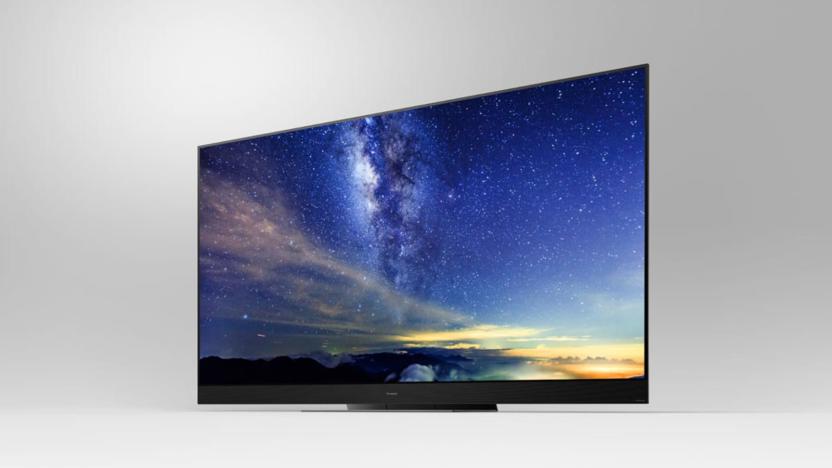
Panasonic's GZ2000 4K OLED TV is for color accuracy fanatics
After alluding to it during its press conference, Panasonic has unveiled the GZ2000, a 4K OLED TV aimed at folks who want very accurate colors. Available in 55- and 65-inch models, it'll support both Samsung's HDR10+ and Dolby Vision for high dynamic range (HDR) video. Panasonic said that its engineers customized the "bespoke" panel to control parameters like brightness and contrast handling. On top of that, it was tuned by one of Hollywood's top colorists, Stefan Sonnenfield, who worked on Wonder Woman and A Star is Born, among other titles.
Steve Dent01.08.2019
Harley-Davidson's first electric motorcycle arrives in August for $30K
After years of talk, Harley-Davidson is finally ready to put its LiveWire electric motorcycle up for sale -- and not surprisingly, it'll cost you. The green two-wheeler is now available for pre-order ahead of its August debut for a hefty $29,799. That's a lot to shell out, but Harley is betting that performance and connectivity will seal the deal.
Jon Fingas01.07.2019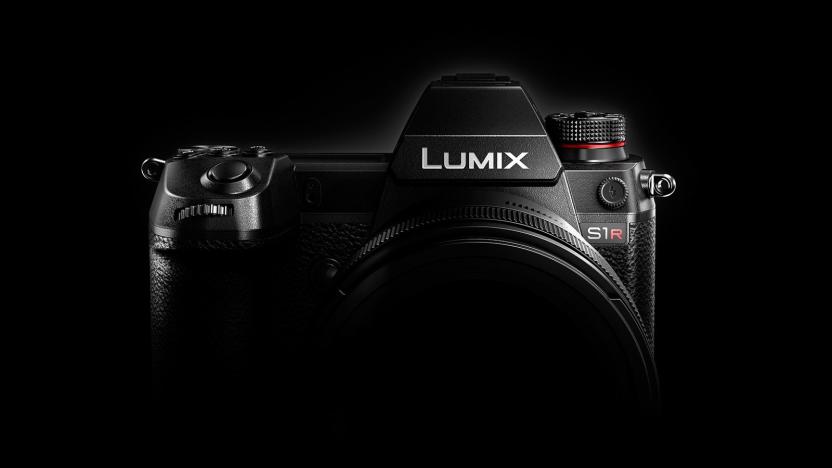
Panasonic's first full-frame mirrorless cameras arrive in March
Panasonic has announced that its full-frame mirrorless Lumix S1 and S1R will go on sale by the end of March, breaking some suspense about when they'll actually be available. It also released a few key details, saying that the cameras will come with a high dynamic range still photo mode, supporting the BBC and NHK's hybrid gamma log (HGL). Users will be able to play back photos on Panasonic HLG compliant 4K TVs, like the the GZ200 OLED model it just announced that's aimed specifically at photographers.
Steve Dent01.07.2019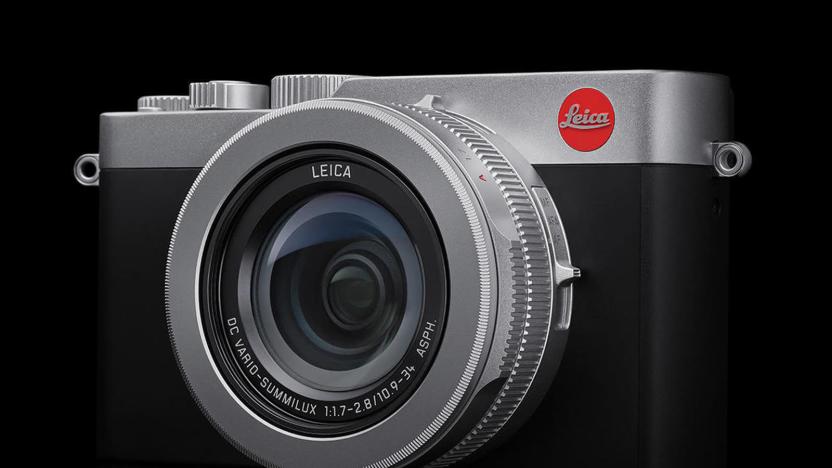
Leica's latest Panasonic rebadge is the 17-megapixel D-Lux 7
Leica is continuing its habit of repackaging Panasonic cameras and charging a premium, although that's not necessarily a bad thing in this case. The company has unveiled the D-Lux 7, a prettier-looking version of Panasonic's LX100 II. It mates Leica's signature, vintage-looking design with a 17-megapixel four-thirds sensor and a 24-75mm equivalent f/1.7-2.8 lens that, combined, can shoot in low light without much fuss. The new hardware also nets you a 2.8-megapixel electronic viewfinder, a 3-inch LCD touchscreen and 4K video recording at up to 30 frames per second.
Jon Fingas11.20.2018
Leica's Q-P is a pricey full-frame camera with subtle refinements
Leica is keeping up its habit of releasing subtly refined P variants of its cameras, this time focusing on its full-frame street camera, the Q. The newly unveiled Q-P mostly focuses on stealth, with the signature red Leica dot going away in favor of textured matte black everywhere and a logo engraving on the top. It won't call quite so much attention to itself while you're concentrating on your street photography, in other words. There are some functional changes to the design as well. The shutter and power/drive controls have been redesigned to more closely resemble what you'd get in the M10 or CL, with more reassuring clicks that let you operate more by feel.
Jon Fingas11.06.2018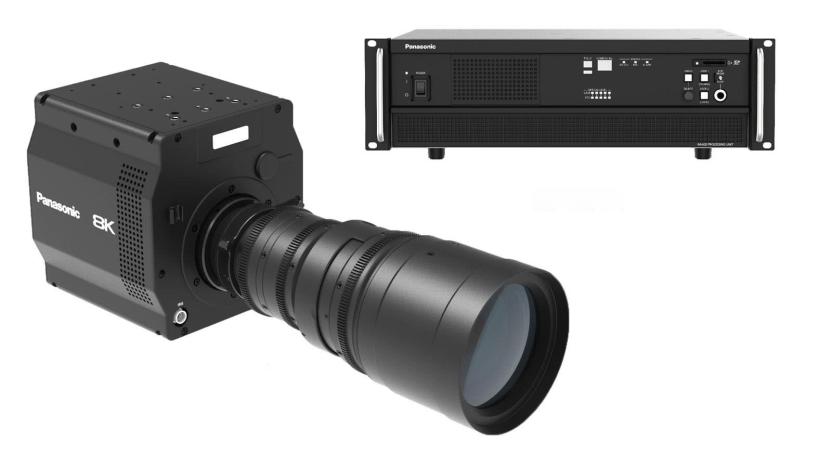
Panasonic unveils the first 8K camera with an 'organic' sensor
Earlier this year, Panasonic unveiled a so-called organic sensor that would give cameras better dynamic range and low-light sensitivity. Now, it has unveiled a camera to go with it, the AK-SHB810, which will be the world's first to pack an 8K organic sensor. Panasonic claims it will have a "wide dynamic range" compared to regular CMOS cameras, and packs a global shutter that records the entire image at once, eliminating so-called "jello" or rolling shutter.
Steve Dent10.29.2018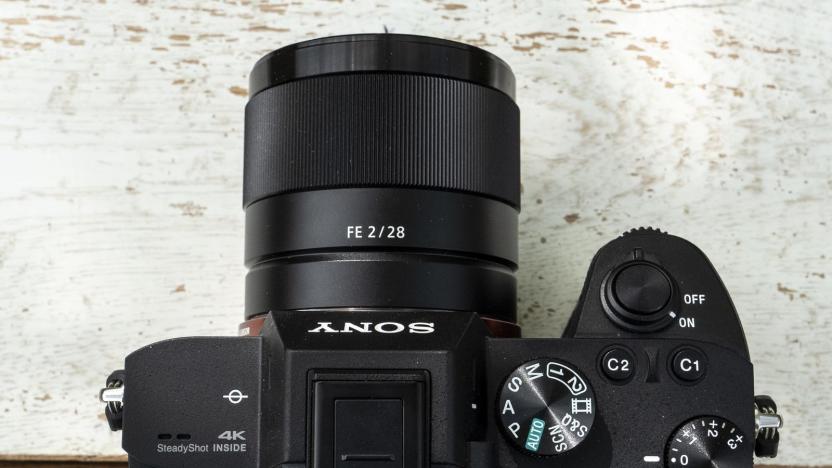
How to pick a lens for your mirrorless camera or DSLR
When buying a mirrorless or DSLR camera, there's an equally crucial side question: What lenses do I need for this thing? The glass you place in front of that sensor plays a key role in how your photos or videos look and what kind of shooting you can do. It's a complex decision too. You need to consider factors like sharpness, distortion, speed, prime or zoom, and most importantly, price. In this guide, I'll touch on all that and look at some of the best lenses for Sony, Canon, Nikon, Fujifilm and Micro Four Thirds cameras.
Steve Dent10.27.2018
Photokina marks a massive upheaval in the camera landscape
Remember the days when Panasonic was dedicated to Micro Four Thirds cameras and Nikon and Canon wanted you to see their latest DSLRs? That was so last month. Over the last 35 days or so, Nikon launched a pair of mirrorless full-frame cameras, the Z6 and Z7, along with the all-new Z-Mount system. Canon then went and announced its full-frame EOS R mirrorless camera and RF mount. This week at Photokina, Panasonic, Sigma and Leica unveiled the L-Mount alliance and Pansonic announced the Lumix S1R and S1 full-frame mirrorless cameras. Sigma will reveal its own full-frame L-Mount model soon too. There hasn't been this much major camera news in ages, and camera fans -- who tend to be loyal to their preferred brands -- have a lot to digest. You can put much of the credit (or blame, if you hate mirrorless) on Sony's success with its A7 mirrorless full-frame lineup, but it's also clear that these models and alliances have been in the works for a long time. All of this is a good thing for buyers, once you sort out the pluses and minuses of all the new models, so let's take a look, shall we?
Steve Dent09.28.2018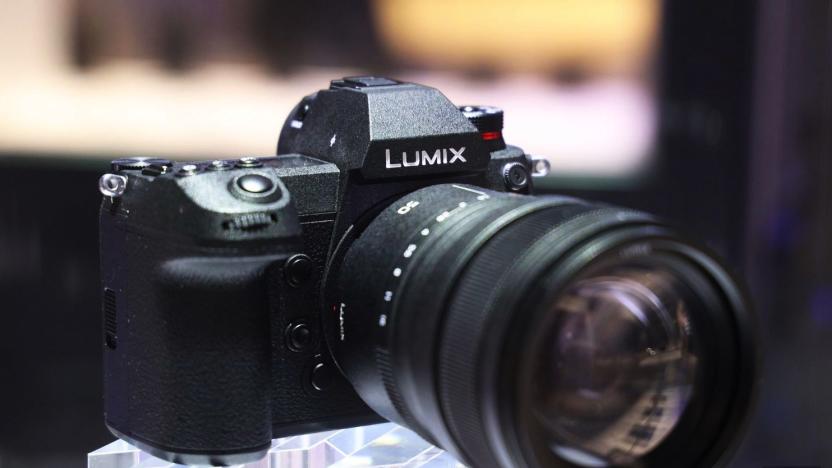
Sony's full-frame mirrorless cameras finally have some competition
Since the launch of the A7 and A7R in 2013, Sony has had virtually no competition in the full-frame mirrorless space. Major players like Canon, Nikon and Panasonic were keeping their focus on other camera formats, such as APS-C, Micro Four Thirds, point-and-shoots and full-frame DSLRs. But that's all starting to change. At Photokina 2018, Panasonic introduced its first full-frame mirrorless cameras, the Lumix S1R and S1, which feature 47- and 24-megapixel sensors, respectively. While these are still in development and likely won't launch until next year, the fact that Panasonic has finally given in and is making a full-frame mirrorless shows Sony is about to start facing some serious competition. It validates all the efforts the company's been making in that market for the past few years, leading up to the gold standard that's its latest model, the A7 III.
Edgar Alvarez09.28.2018